War is never pretty. War is hell, as General William Tecumseh Sherman famously observed. But sometimes war is necessary, and the death and destruction resulting therefrom are an alternative to even more death, destruction, and human misery.]

Twenty-three years ago, when She Who Must Be Obeyed and I visited Hawai‘i for the first time, we spent a goodly chunk of one day visiting the Pearl Harbor Memorial: the site where a devastating attack by Japanese forces compelled the United States to enter World War II.
It was a moving and sobering experience. Standing there over the sunken remains of the USS Arizona, oil from which continues to seep to the surface of the harbor, brought tears to our eyes. And as if that were not enough, there were veterans of that terrible morning among us, men grizzled with age and care, who were there to tell their own stories of what they saw, what they lived through on that day.
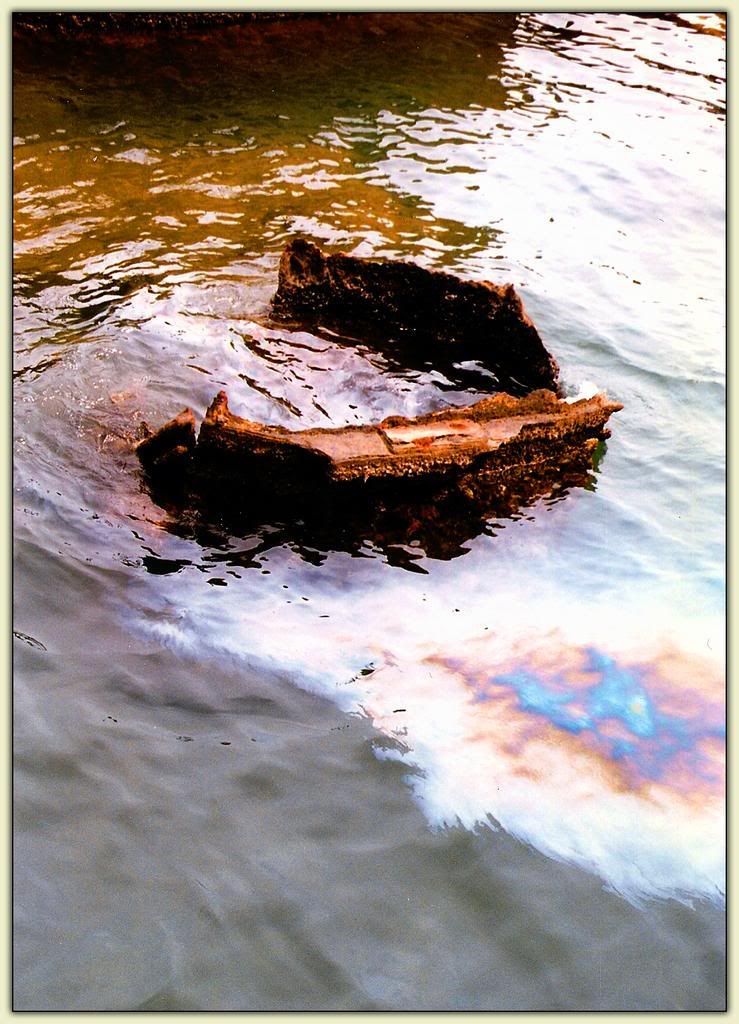
Oil still seeps from the grave of the USS Arizona.
Seven years later we were back at Pearl Harbor, this time with Elder Daughter and the Mistress of Sarcasm in tow. Having been there once before did not make our second visit any less moving. In fact, now that the novelty of being in Hawai‘i was gone, we could focus more on the emotion of being in a place where so many lives had been lost, where such destruction had taken place.
It was a little strange to note the astonishing number of Japanese tourists....even more than had been there in 1985.
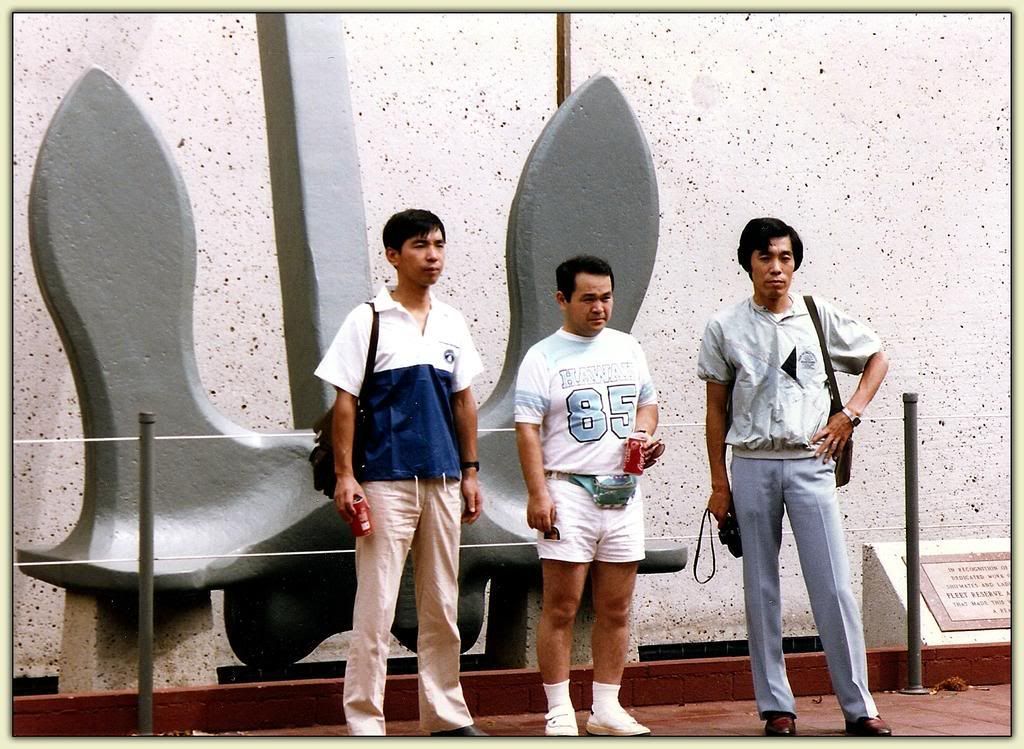
Japanese tourists at Pearl Harbor, 1985.
Back in the early 1990’s, when the Japanese economy was flying high and Japanese sararimen were beginning to feel their oats, many of them dared to actually take vacations instead of working 24/7. Hawai‘i was, for them, a favorite destination for obvious geographic reasons...and Pearl Harbor, being of significant historical and touristic interest, was a frequent stopping place. They were, by and large, young people, people for whom the events of December 7, 1941 were the dry stuff of history books.
I could not truly begrudge their presence there, if for no other reason that the events of that day created the world we live in now, a world that includes a newly-rebuilt Japan arisen from the destruction of war, a Japan that has worked its way into the position of a first-world economic colossus. Learn about history, I thought, seeing them. Understand what happens when national interests collide. Understand that when you fuck with the bull, you get the horn.
Fast-forward sixteen years.
When Elder Daughter invited me to build the itinerary for our recent trip to Japan, I knew it would have to include a stop in Hiroshima. It wasn’t only that I had known the story of that ill-fated city - the first city ever to suffer a nuclear attack - since I was a young Snot-Nose. It was because I wanted the other Bookend.
Bookends. Pearl Harbor at one end, Hiroshima at the other, enclosing a four-year shelf containing tomes filled with misery, death, and devastation. It was important that I see both ends of that terrible War-Shelf.
One month ago today, we were there... in that very place that, on August 6, 1945, was kissed by a man-made sun and turned into a charnel house.
Hiroshima is a City with a Mission these days. Its chief industry appears to be the promotion of world peace and disarmament, a sermon this city’s history uniquely qualifies it to preach.
The Peace Museum does not soft-soap Japan’s militarism or the events that led to the United States involvement in World War II. It appears to adopt a cool, analytical stance with respect to its portrayal of the events that culminated in Hiroshima’s selection as the first sacrifice to the Nuclear Gods. [Factors such as good weather and having suffered no prior bombing damage were critical. Low clouds saved Kokura from being Target #2; Nagasaki got that bomb instead.]
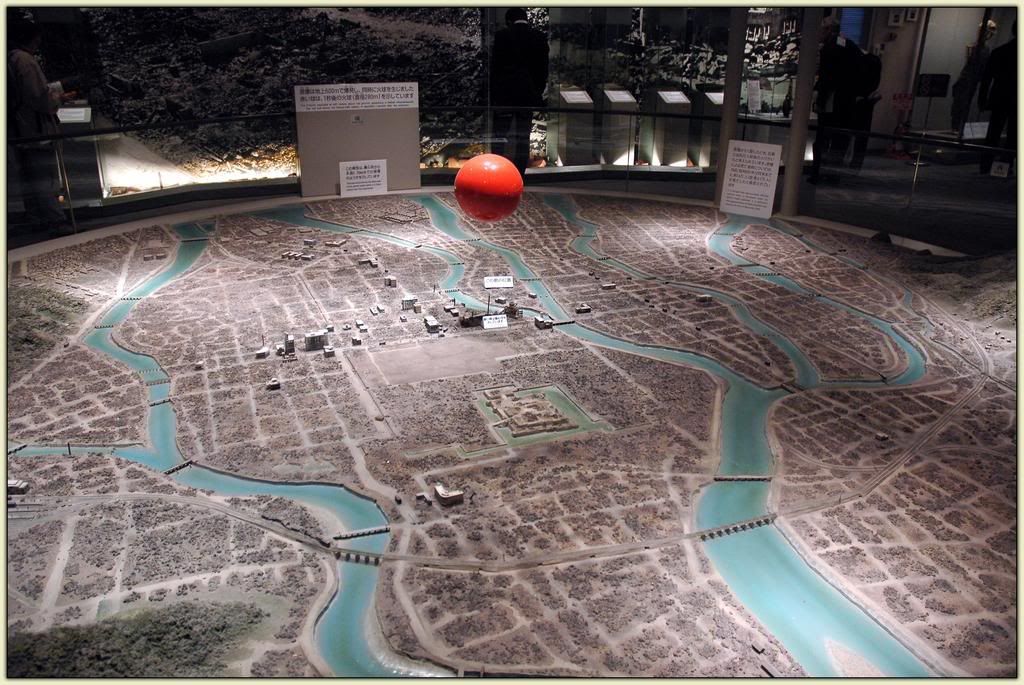
Diorama at the Peace Museum in Hiroshima shows the devastation wrought by “Little Boy” - a single 15-kiloton U-235 gun-method bomb detonating at 580 meters altitude. The red ball illustrates the size and position of the fireball one second after detonation, at which time it was 280 meters in diameter.
There are plenty of Western visitors to Hiroshima, and among them many Americans. Americans are not resented here, so many years after the Bomb - as is the case elsewhere in Japan, we are astonishingly well-liked. Maybe not a mirror image of things in Hawai‘i, but close enough.
The Genbaku Domu - the Atomic Bomb Dome, the former Prefectural Industrial Promotional Hall that was one of the few structures standing after the Bomb dropped - stands as a mute witness to terrible events, surrounded by the new city grown Phoenix-like around it. The vast number of people who died that day were victims of a chain of events that had been set in motion well before the attack at Pearl Harbor.
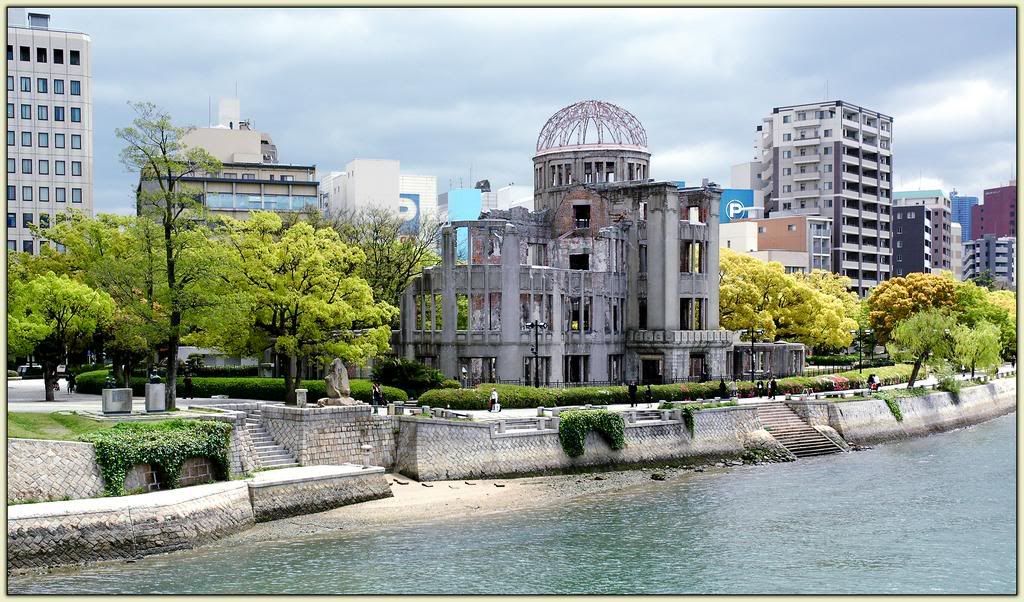
The Genbaku Domu, surrounded by a modern Hiroshima reborn from the ashes.
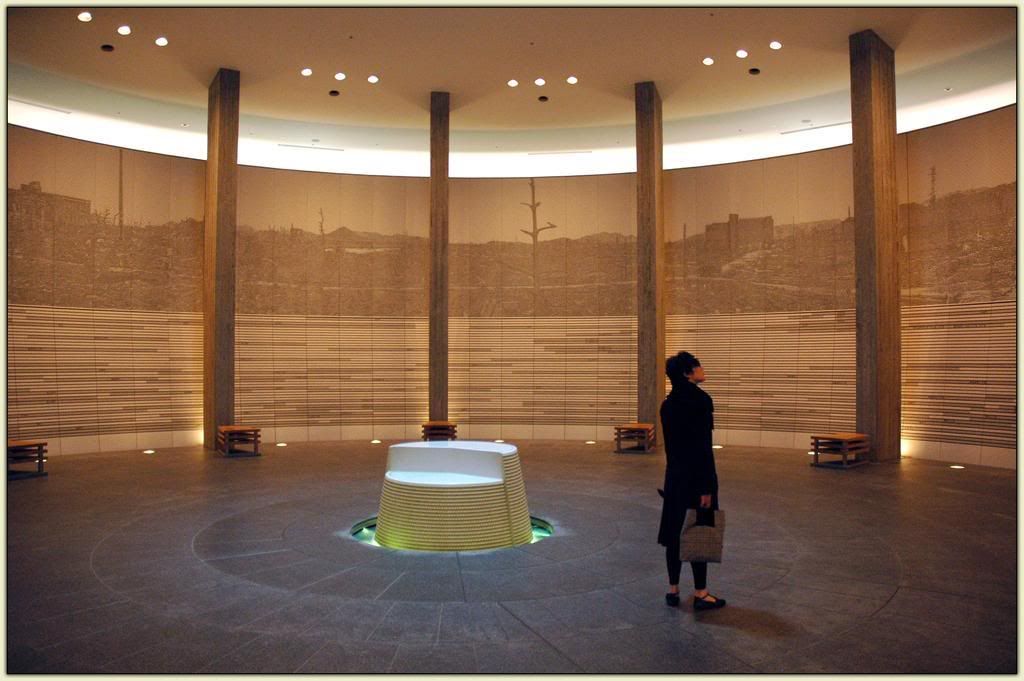
The Peace Memorial Hall for the Atomic Bomb Victims.
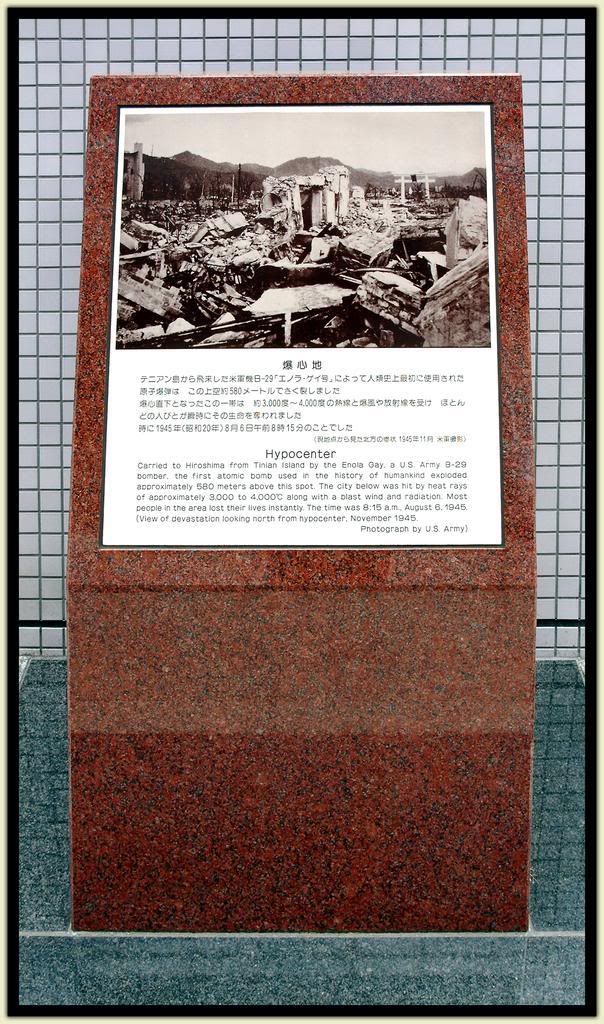
The hypocenter...580 meters directly below where the Bomb went off.
I will not second-guess the people whose decision it was to drop that Bomb. The alternative, best as they could envision it, was a bloody, drawn-out invasion of the Home Islands, an invasion that would have killed far more Japanese than did the bombings at Hiroshima and Nagasaki. But Japanese lives were not the main consideration at that point. Victory - and American lives - were.
We looked past the thousands upon thousands of paper cranes, the uncountable memorials, the silent specter of the Genbaku Domu, to a vibrant city where the Hiroshima Carp were beginning a new baseball season and where we were greeted with smiles. We sat down and enjoyed a hole-in-the-wall lunch of okonomiyaki (a thin pancake covered with soba noodles, Hiroshima’s famous local oysters, bean sprouts, sweet soy sauce, and a thin omelette) and jizake (the local brew), and thought...of bookends.
Update: Call it synchronicity, but I find it fascinating that the golfer who just snagged his first PGA Tour win at the AT&T Classic (held last week at the TPC Sugarloaf northeast of Atlanta) was none other than Ryuji Imada, a native of (where else?) Hiroshima. Guy really knew how to bomb the fairways, I guess...


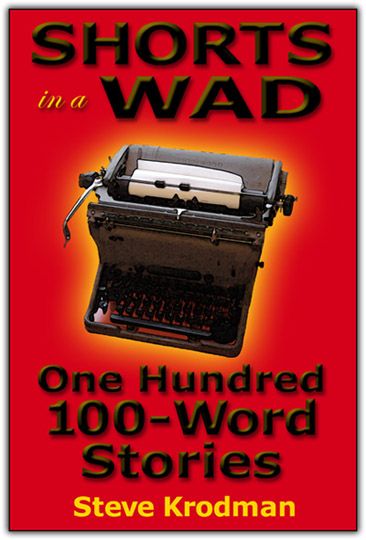

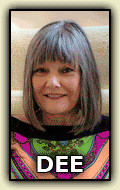


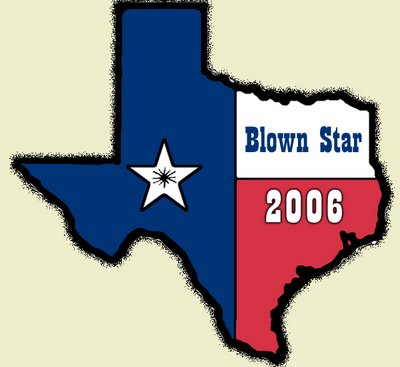












1 comment:
Nicely done. I was happy to note the lack of revisionist history re: the bomb.
Post a Comment